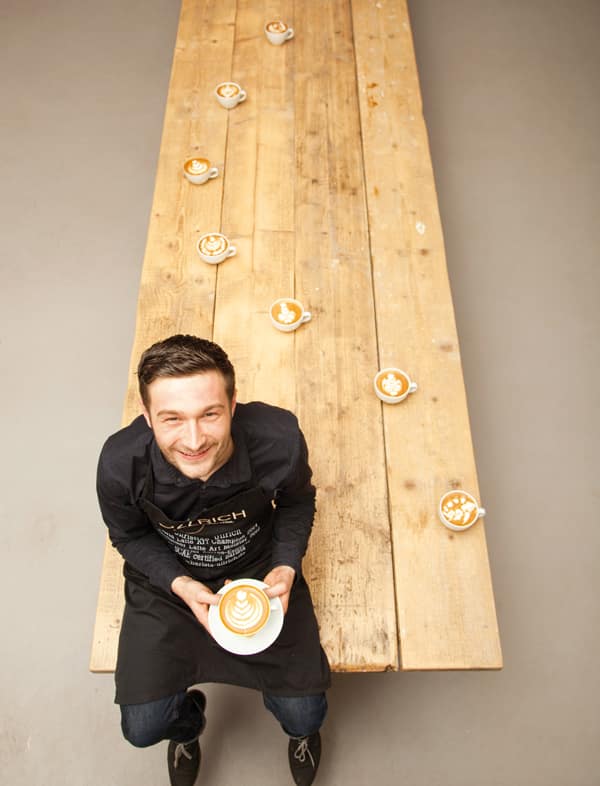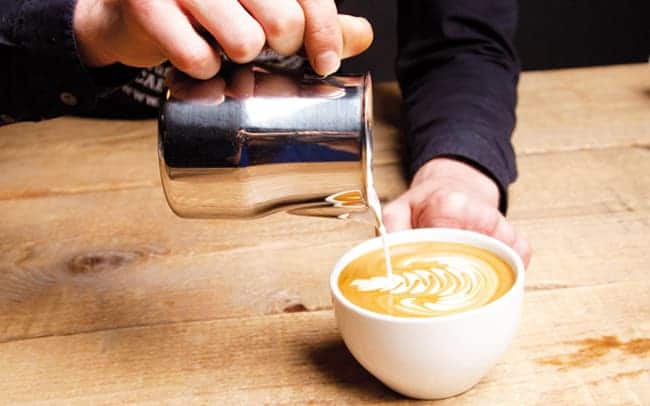What`s The Best Milk For Latte Art?
What milk & does it matter? A helpful Guide
That was the question because milk and espresso are often combined, but which milk can be frothed up best and is it also possible with milk-like drinks? Crema was looking for the answer to this epochal question.

Milk is not just milk.
And foaming the perfect latte art milk foam for a cappuccino that is a success all around requires a little practice, patience and the necessary know-how.
If you master the technology, the search for the right milk or the right milk substitute in the form of a so-called drink begins.
Milk comes in different fat levels, processed differently and fluctuations in protein content. The fat content of milk favours a very creamy, almost creamy milk foam.
The protein content, in turn, ensures that the foam becomes stable and fine-pored.
A good combination of both components would be optimal. But what about the milk alternatives?
Can other animal milk types also foam up so well?
Can this also be done with cereal milk?
Questions that we wanted to investigate.
To ensure that the frothing technique is correct and that the Latte Art is practised with the necessary exercise and the casual swing in the wrist, I met with the Latte Art World Champion 2014 in front of the steam nozzle.
Christian Ullrich, SCAE-certified barista and now freshly bachelor’s degree in his field welcomed us in one of his training rooms.
He now passes on his knowledge to coffee enthusiasts in training courses and trains participants for championships (www.barista-ullrich.de ).

In this joint test, goat milk was tested as an animal alternative to cow’s milk. As a milk alternative, various cereal drinks were examined more closely and soy drink, almond drink, rice drink, and coconut drink.
These types of milk are mostly obtained by fermentation.
The foamability of the milk or the drink, the foam’s consistency, and how well latte art can be made from it were considered.
Christian Ullrich has always cast the same motif for us to compare the results better. The taste of the cappuccino was also assessed.
An espresso blend made from 70% Arabica and 30% Robusta was used for each cappuccino.
The result showed that foam made from whole milk with a very high-fat content has the best foamability and stability, and positively supports the espresso’s aroma.
The goat milk and drinks were mostly very flavour-intensive and gave the cappuccino its own nuances, which in some cases even drowned out the taste of the espresso.
The results can be found below, stating the protein and fat content.
The Test`s
Cow’s milk

Fat content: 3.5 g per 100 ml
protein content: 3.3 g per 100 ml
Good foamability develops a fine-pored, stable and shiny foam.
The milk foam had an almost creamy consistency with which latte art can be poured well. The cappuccino tastes full-bodied, balanced and the espresso flavours are well supported.
Goat milk

Fat content: 3.2 g per 100 ml
protein content: 3.1 g per 100 ml
The foamability is comparable to cow’s milk, but the milk itself is somewhat more watery. The milk foam is not quite as stable and disintegrates faster.
Latte art is still possible. The taste tastes intense of goat cheese and clearly drowns out the espresso taste
Coconut drink

Fat content: 0.9 g per 100 ml
protein content: 0.1 g per 100 ml
Very poor foamability, as the initial values suggested. The foam, surprisingly shiny, is large-pored, very unstable and separates quickly.
The taste is soapy, very dominant and does not allow the espresso aromas to come into their own. The cappuccino is bitter in the finish.
Rice drink

Fat content: 1 g per 100 ml
protein content: 0.1 g per 100 ml
The professional only creates bath foam here. The foam is porous and extremely unstable. Latte art is complicated.
The taste of the cappuccino is initially dull, gradually a very fine sweetness and acidity comes through.
Soy drink

Fat content: 1.8 g per 100 ml
protein content: 3 g per 100 ml
The often chosen alternative to lactose-containing milk provides a shiny, fine-pored foam.
The foam is very voluminous, and when pouring the latte art, there is a kind of 3-D effect. After a short time, the soy drink flocculates. The cappuccino tastes mealy, and the soy taste is very intense.
Spelled drink

Fat content: 1 g per 100 ml
protein content: 0.5 g per 100 ml
The foamability is moderate. The foam is relatively stable, but has large pores and is matt. Latte art can only be poured indefinitely.
The cappuccino is watery, very sweet and tastes very clearly of cereals. The coffee aromas take a back seat but are still noticeable.
Almond drink

Fat content: 1.1 g per 100 ml
protein content: 1.1 g per 100 ml
The almond drink is complicated to foam and disintegrates relatively quickly after foaming. Pouring latte art becomes almost impossible and looks more random.
The taste is delightful, mealy, clearly almond-like, and the coffee can hardly be tasted.
Oat drink

Fat content: 1.5 g per 100 ml
protein content: 0.3 g per 100 ml
Here too, only bath foam is possible, which disintegrates even before pouring. The cappuccino tastes watery, strongly of cereals and a bit mealy.
The coffee flavours are not optimally supported and are almost completely lost.
I hope you learned something new, and can use this information to improve your latte art, and possibly change your milk type.
Good luck,






